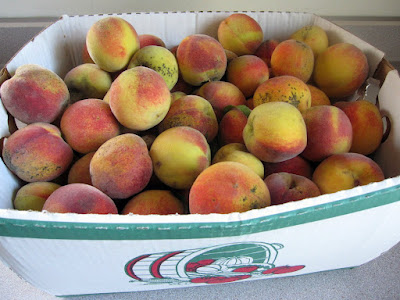I recommend storing extra flat breads between pieces of wax paper in a ziploc bag in the freezer.
Flat Bread
from Mel's Kitchen Cafe
*Makes about 8-9 breads
3 to 3 1/4 cups (12 3/4 to 13 3/4 ounces) unbleached all-purpose flour or white whole wheat flour
1 1/2 cups (12 ounces) boiling water
1/4 cup (1 1/2 ounces) potato flour OR 1/2 cup (5/8 ounces) potato buds or flakes (I used potato flakes)
1 1/4 teaspoons salt
2 tablespoons (7/8 ounce) vegetable oil
1 teaspoon instant yeast*
Place 2 cups of the flour into a bowl or the bucket of a bread machine. Pour the boiling water over the flour, and stir until smooth. Lightly cover the bowl or bucket and set the mixture aside for 30 minutes.
In a separate bowl, whisk together the potato flour (or flakes or buds) and 1 cup of the remaining flour with the salt, oil and yeast. Add this to the slightly cooled flour/water mixture, stir, then knead for several minutes (by hand, mixer or bread machine) to form a soft dough. It may look like the flour/salt/oil/yeast mixture will never absorb into the boiling water/flour mixture. It will, I promise, but you may need to take it out of your electric mixer, if using one, and knead the flour in by hand or add it very gradually into your electric mixer.
Note: You can allow the dough to go through the entire kneading cycle(s) in the bread machine, but it’s not necessary; about a 5-minute knead in the machine, once it gets up to full kneading speed, is fine. The dough should form a ball, but will remain somewhat sticky (the dough is fairly stiff, so don’t be worried – just be careful not to overflour the dough). Add additional flour only if necessary; if kneading by hand, keep your hands and work surface lightly oiled. Let the dough rise, covered, for 1 hour (I let mine rise up to 2 hours).
Divide the dough into 8 pieces (each about the size of a handball, around 3 ounces), cover, and let rest for 15 to 30 minutes. Roll each piece into a 7- to 8-inch circle, and dry-fry them (fry without oil) on a griddle or frying pan over medium heat for about 1 minute per side (I cooked mine about 2-3 minutes per side and they didn’t dry out), until they’re puffed and flecked with brown spots. Adjust the heat if they seem to be cooking either too quickly, or too slowly; cooking too quickly means they may be raw in the center, while too slowly will dry them out. Transfer the cooked breads to a wire rack, stacking them to keep them soft. Serve immediately, or cool slightly before storing in a plastic bag.
*This recipe works best with instant yeast because it dissolves during the kneading process, so you don’t have to knead liquid into the dough. If you really prefer to use active dry yeast, use only 1 cup boiling water for the initial dough, dissolve the yeast in 1/4 cup warm water, and add this mixture to the dough along with the potato flour mixture. It’ll be somewhat “slippery” at first, but will knead in and eventually become smooth.











